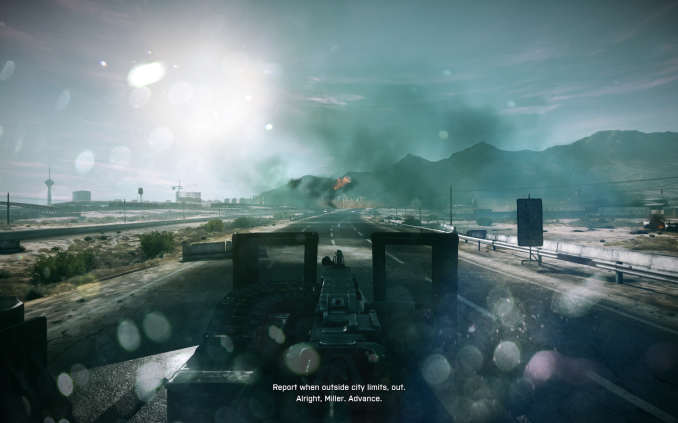Intel Iris Pro 5200 Graphics Review: Core i7-4950HQ Tested
by Anand Lal Shimpi on June 1, 2013 10:01 AM ESTImage Quality
Software compatibility and image quality remain understandable concerns, however Intel has improved tremendously in these areas over the past couple of years. I couldn't run Total War: Shogun 2 on Iris Pro, but other than that every other game I threw at the system ran without errors - a significant improvement over where things were not too long ago. On the compute side, I couldn't get our Folding@Home benchmark to work but otherwise everything else ran well.
On the image quality front I didn't see too much to be concerned about. I noticed some occasional texture flashing in Battlefield 3, but it was never something I was able to grab a screenshot of quickly enough. Intel seems pretty quick about addressing any issues that crop up and as a company it has considerably increased staffing/resources on the driver validation front.
The gallery below has a series of images taken from some of the benchmarks in our suite. I didn't notice any obvious differences between Intel and NVIDIA render quality. By virtue of experience and focus I expect software compatiblity, image quality and driver/hardware efficiency to be better on the NVIDIA side of the fence. At the same time, I have no reason to believe that Intel isn't serious about continuing to address those areas going forward. Intel as a company has gone from begging software developers to at least let their code run on Intel integrated graphics, to actively working with game developers to introduce new features and rendering techniques.

















177 Comments
View All Comments
Old_Fogie_Late_Bloomer - Monday, June 3, 2013 - link
The performance isn't earth-shattering, but if Intel manages to put out good open-source Linux drivers for Iris Pro, I can't help but feel like this would be a great chip for that; it isn't like you'll be playing Crysis in Ubuntu anytime soon. I kind of want that CRB (or something like it), actually.tviceman - Saturday, June 1, 2013 - link
I'll bet notebooks with mid-range quad core CPU's and gt 750m discrete graphics will be cheaper than notebooks with Iris Pro enabled iGPU graphics as well. The only benefit would be a slightly slimmer chassis and battery life. Anyone who still wants to game on a notebook is noticeably better off with a mid-range discrete GPU over this.esterhasz - Saturday, June 1, 2013 - link
On page four, the ominous launch partner is not "keen" rather than "key", I guess. I'd be very keen on having that rMBP 13" with IP5200, though.Ryan Smith - Saturday, June 1, 2013 - link
Noted and fixed. Thank you.tipoo - Saturday, June 1, 2013 - link
I'm very much in that boat too, a quad core 13" rMBP with Iris Pro would put it over the top.MattVincent - Wednesday, June 12, 2013 - link
totally agree. I wonder if apple will actually put a quad core in the 13" though. I bet they would rather sell more 15" rmbp'sjeffkibuule - Saturday, June 1, 2013 - link
Would a 47W chip be able to fit into a normal 13" Ultrabook-like chassis like the 13" MacBook Pro with Retina Display? Only an extra 12W TDP to deal with.esterhasz - Saturday, June 1, 2013 - link
This would be awesome and we have to remember that the 47W TDP includes voltage regulation moving off the MB, so the gap is maybe only 8W. The 47 TDP also refers to both CPU and GPU running at full speed, which is an extremely rare scenario - in gaming, the CPU load will probably hover at 50% only.In any case, if the tested model goes into a rMBP 13" I'm going to buy it before Tim Cook has left the stage.
nofumble62 - Saturday, June 1, 2013 - link
Thinking to buy a Ivybridge Mac Book Pro for my wife, I guess she will have wait a little longer for this baby. I wish they could fit in a Mac Book Air.jeffkibuule - Saturday, June 1, 2013 - link
Look at the price of those chips though, you're going to be dropping at least $2000 on such a laptop when the CPU alone is $478.